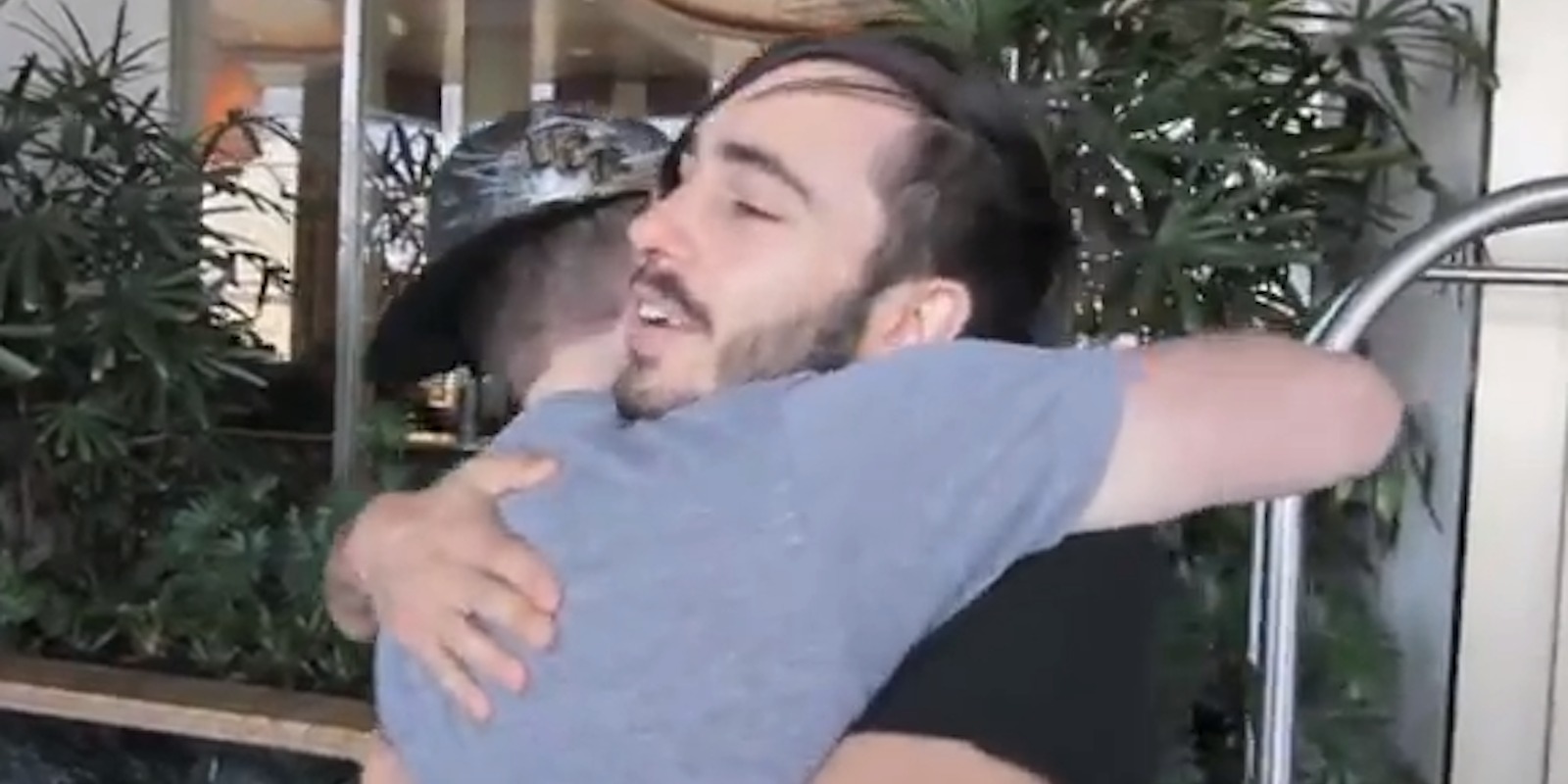YouTube, the sprawling online-video site, can seem like a kind of anti-community. From the hate-filled comments, to self-involved teenage complaint videos, to elite YouTubers bragging about their earnings, little suggests people coming together in search of a common cause.
But there are glimmers of hope—especially in the clips filmed at VidCon, the unofficial YouTube conference that took place over the weekend in L.A. In them, a theme emerges: YouTube is home to a community that is strong and vibrant, an assemblage of people who are stronger together than apart.
Amidst the compilation footage, the panels and events, the after-parties, and even mini-documentaries of sexual tension, YouTubers can’t stop talking about the ways in which they connect with each other through the site.
“There’s so much love. People here love you, because they watch your videos they feel like they know you,” popular YouTube personality Brittany Taylor says of the conference attendees to interviewer Shira Lazar, herself a well-known videoblogger.
Philip DeFranco, who goes by sxephil on YouTube, admits in his “Growing Up on YouTube” panel that he left YouTube for a while, but was pulled back in when he “found this thing that inspired” him.
That thing was the “amazing” YouTube community started by videoblogger Ze Frank.
DeFranco was “taken” by the fact that people from all over the US sent Ze Frank videos, who in turn would travel all over the country to visit his viewers. When Ze Frank ended his daily show, DeFranco said he had a “void” in his life — because “that was something I would do every day, it was my hobby.”
DeFranco said Ze Frank’s show was the inspiration behind his popular “The Philip DeFranco Show.”
“[It] showed me how awesome authenticity was, and how awesome communities could be.”
The most interesting reaction came from SocioMatt, a YouTube newcomer who’d never uploaded a video before coming to VidCon. An avid video viewer and a fan of series like “My Drunk Kitchen,” SocioMatt found himself blown away by the existence of a real community among YouTubers—a community which expressed itself by the ready friendliness with which YouTube creators greeted each other and their fans.
In his second video, titled “Community at VidCon,” SocioMatt talks about his YouTube revelation: Before coming to the conference, SocioMatt thought of YouTube as a series of one-hit wonders and “random” content. He confessed he had no idea people were consistently creating good content and communicating with each other in a personal manner.
“A lot of scholars lately have been saying that [community is] declining in the United States… people don’t know how to get together into groups any more. This is YouTube. This is a huge community,” said SocioMatt. “Before I was here I kinda thought YouTube was just a place where people would post random videos.” At VidCon, SocioMatt discovered YouTube was a place where people made friends and connected with one another through video.
SocioMatt closed his video by telling viewers that YouTube and its community “is something that I think more people should start paying attention to.”
Looking at the limited media coverage of VidCon, SocioMatt is right. The Associated Press, GigaOm, and Variety covered the conference, but focused on its commercial aspects, such as how YouTubers are using the site to launch more mainstream careers.
That’s been a running thread in YouTube coverage since it made headlines for selling to Google for the eye-popping amount of $1.65 billion. And even today, YouTubers’ money talk feeds the notion that the site is about making a quick buck.
So SocioMatt’s surprise at discovering a community on YouTube fits with many people’s preconceived notions of the site. YouTube is seen by the general public as a place to share videos, not connect and make friends.
But strong social bonds between users have formed, despite YouTube’s lack of features found on other social networks like Facebook or Myspace. (For instance, searching for YouTubers based on location is practically impossible and video responses are grouped in a confusing and inconsistent manner.)
The management of YouTube seems far more concerned with generating revenues and increasing the production value of its content (as evidenced by the recently released Creators Playbook). This could change as Google pushes its Google+ project to introduce social features throughout its offerings. In any event, despite Google’s neglect, a community has formed on YouTube, and will continue to grow whether YouTube helps foster it or not.
iJustine, a popular YouTube personality, started a new show last year called “Vlog University,” where she gives weekly “homework” assignments — what she calls fun ideas for videos. In her first “Vlog University” video, she explained that she hopes the assignments will inspire people to post more. Her last homework assignment was to make videos playing with an imaginary pet.
Daniel Brown, who goes by Pogobat and calls his fan base the PogoTribe, has a new show titled “Delicious Steak with Dan Brown” whose sole purpose is to engage the YouTube community. Brown is currently playing digital chess with the PogoTribe.
Hank and John Green of the Vlogbrothers, who happen to be the organizers of VidCon, have a dedicated community who call themselves nerdfighters. In their latest video titled “I Love My Brother”, Hank shows off a bracelet made for a deceased “nerdfighter” named Ester. Proceeds of the bracelet go to “This Star Won’t Go Out”, an organization created by Ester’s parents dedicated to helping children with cancer.
In an age where tech companies are tripping over themselves to be more social, it’s ironic that YouTube as a company sends the message that it views social interaction as secondary.
But to many YouTubers, their communities are their priorities. When his channel became one of the top 100 most-subscribed-to channels on YouTube, Whiteboy7thst told his fellow YouTubers in video form he’d be nothing without them.
That’s the definition of a community.


